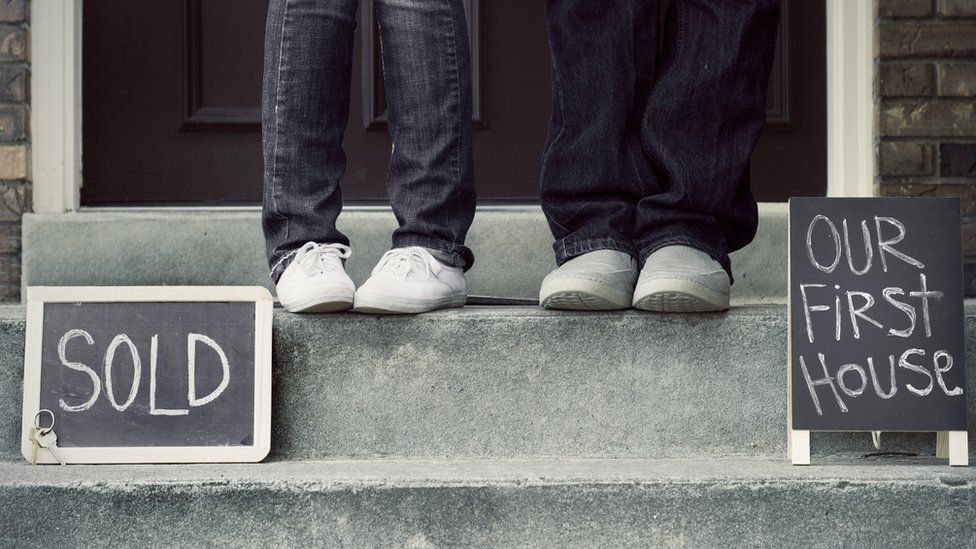Homes cost more than seven times income
- Published

Working people typically face house prices of more than seven times their annual earnings as affordability is increasingly stretched.
The typical property cost 7.6 times average annual earnings of employees in England and Wales, the Office for National Statistics (ONS) said.
The aftermath of the financial crisis saw affordability levels plateau.
But now buyers face paying a record multiple of earnings as the affordability gap widens.
In 2007, the typical buyer faced paying 7.2 times their earnings on a property, but this was surpassed in 2015 (7.4 times) and again in 2016 (7.6 times).
The official figures will make gloomy reading for potential first-time buyers whose wages have stagnated and who now see property ownership become comparatively more expensive.
However, borrowing costs are at historic lows with banks and building societies cutting interest rates on mortgages to attract customers.
A recent report by Shelter suggested that nearly eight out of 10 families across England are unable to afford newly built homes in their local area.
'Quickest sales'
Northampton is the fastest-moving property market in the UK, according to analysis of listings on a property portal.
Zoopla calculated the length of time that properties were listed on its website before being marked as under offer.
Typically, among towns and cities across the country, properties in Northampton were listed for the shortest amount of time, 27 days.
Milton Keynes (29 days) and Croydon (30 days) were next on the list.
Regionally, properties on the site came under offer fastest in the South East of England and the East of England (42 days) compared with the longest - Wales - which took 66 days.
Most and least affordable
The ONS figures show that London hosts seven of the 10 least affordable areas to buy a property in England and Wales last year.
In Kensington and Chelsea, the typical property costs 38 times the average annual income of residents in the area. In 1999, a home cost 13 times typical earnings.
Buyers in Westminster had to pay 24 times typical earnings for the area last year, and it was 21 times multiple in Hammersmith and Fulham.
At the other end of the scale, buyers Copeland in Cumbria had to pay 2.8 times typical local earnings for a home.
Next on the affordability list were the Welsh council areas of Neath Port Talbot and Blaenau Gwent (both 3.6 times).
Property commentator Henry Pryor argues that affordability levels are less relevant for some buyers.
"Up to 40% of buyers do not have a mortgage, they are cash buyers for whom affordability isn't an issue and for whom there is no link to their income," he said.
"Half of people who own a home have no borrowings. The unearned and largely untaxed money they have made simply by living in their property isn't recorded in inflation figures but it is a significant part of what maintains house prices and drives the economy."
Roger Harding, of Shelter, said: "The only way to fix the housing crisis is for the government to get behind a different way of building that brings down the cost of land."